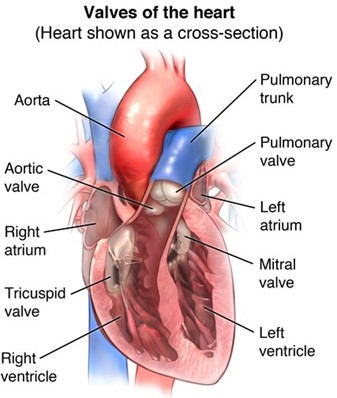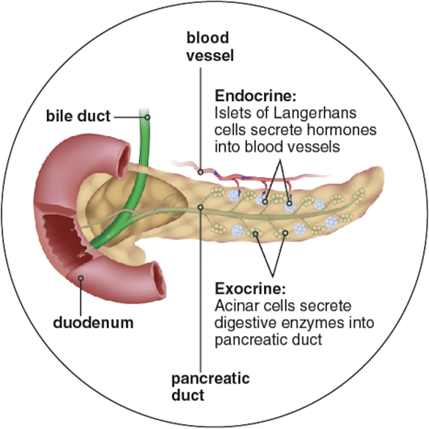Which of the following heart valves lies between the left atrium and left ventricle and prevents the regurgitation of blood from the ventricle back into the atrium?
Mitral valve.
Tricuspid valve.
Pulmonary valve.
Aortic valve.
The Correct Answer is A
The mitral valve lies between the left atrium and left ventricle and prevents the regurgitation of blood from the ventricle back into the atrium.

It has two leaflets that open and close to allow blood to flow from the lungs into the left atrium and then to the left ventricle.
Choice B is wrong because the tricuspid valve lies between the right atrium and right ventricle and prevents the regurgitation of blood from the ventricle back into the atrium.
It has three leaflets that open and close to allow blood to flow from the body into the right atrium and then to the right ventricle.
Choice C is wrong because the pulmonary valve lies between the right ventricle and the pulmonary artery and prevents the regurgitation of blood from the artery back into the ventricle.
It has three leaflets that open and close to allow blood to flow from the right ventricle to the lungs, where it picks up oxygen.
Choice D is wrong because the aortic valve lies between the left ventricle and the aorta and prevents the regurgitation of blood from the aorta back into the ventricle.
It has three leaflets that open and close to allow blood to flow from the left ventricle to the rest of the body.
Nursing Test Bank
Naxlex Comprehensive Predictor Exams
Related Questions
Correct Answer is A
Explanation
Excretion is the process of removing metabolic wastes or excrements from the body.
Metabolic wastes are substances left over from metabolic processes (such as cellular respiration) which cannot be used by the organism and must therefore be excreted.
These include nitrogen compounds, water, CO2, phosphates, sulphates, etc.
Choice B. Absorption is wrong because absorption is the process of taking in substances into the body or cells.
It is not related to the removal of waste.
Choice C. Metabolism is wrong because metabolism is the sum of all the chemical reactions that occur in an organism.
It is not a process of removing wastes, but rather producing them.
Choice D. Assimilation is wrong because assimilation is the process of incorporating substances into the body or cells.
It is also not related to the removal of waste.
Normal ranges for metabolic wastes vary depending on the type and concentration of the waste, as well as the organism and its environment.
For example, ammonia is a very toxic waste that requires a lot of water for its excretion, while uric acid is a less toxic waste that can be concentrated into a small volume.
Some normal ranges for human metabolic wastes are:
Urea: 2.5 to 6.4 mmol/L in blood serum Uric acid: 3.4 to 7.2 mg/dL in blood serum Creatinine: 0.6 to 1.2 mg/dL in blood serum CO2: 35 to 45 mmHg in arterial blood gas
Correct Answer is B
Explanation

The pancreas is an organ that has both endocrine and exocrine functions.
As an endocrine gland, it secretes hormones such as insulin and glucagon that regulate blood sugar levels.
As an exocrine gland, it releases substances that neutralize stomach acid and digestive enzymes that break down proteins, fats, and carbohydrates.
Choice A is wrong because the thyroid gland is only an endocrine gland.
It secretes hormones such as thyroxine and calcitonin that regulate metabolism and calcium levels.
Choice C is wrong because the anterior pituitary is only an endocrine gland.
It secretes hormones such as growth hormone, prolactin, and adrenocorticotropic hormone that regulate growth, lactation, and stress response.
Choice D is wrong because the liver is mainly an exocrine gland. It produces bile that helps digest fats and detoxifies the blood.
The liver also has some endocrine functions, such as producing insulin-like growth factor 1 and angiotensinogen, but these are not its primary roles.
Whether you are a student looking to ace your exams or a practicing nurse seeking to enhance your expertise , our nursing education contents will empower you with the confidence and competence to make a difference in the lives of patients and become a respected leader in the healthcare field.
Visit Naxlex, invest in your future and unlock endless possibilities with our unparalleled nursing education contents today
Report Wrong Answer on the Current Question
Do you disagree with the answer? If yes, what is your expected answer? Explain.
Kindly be descriptive with the issue you are facing.
